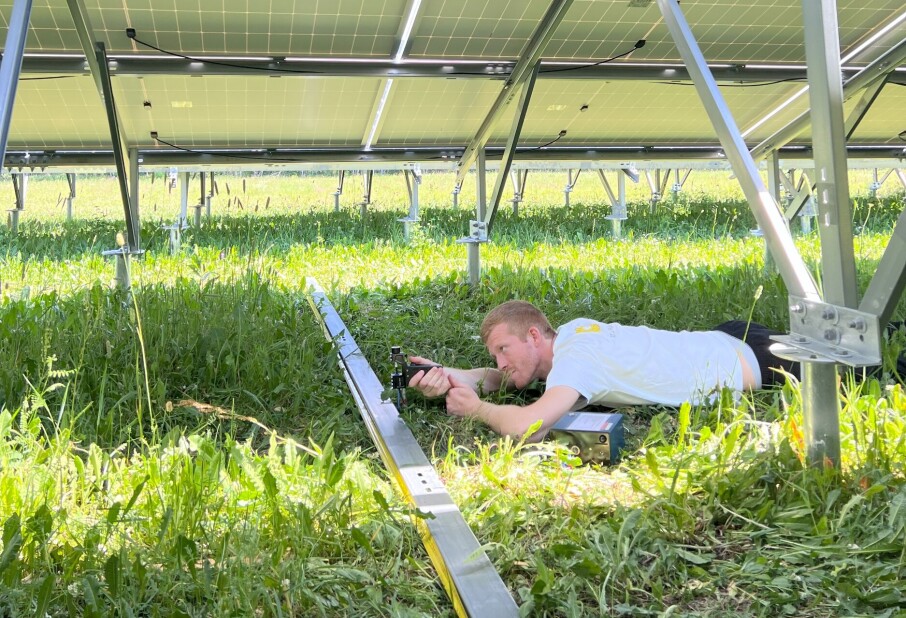This happened when students did breathing exercises and learned about stress
The effect was greatest among the students who were struggling the most to begin with.

The students who had the poorest mental health and who were the weakest in math showed the greatest improvement.
“We find this very encouraging,” says Professor Edvin Bru, adding:
“Sometimes you get what’s called the Matthew effect – when something works best for those who are already doing well. But this programme seems to work best for those who are struggling.”
And what works is a learning programme called ROBUST. It was developed by researchers at the University of Stavanger's Norwegian Centre for Learning Environment.

The number of children and youth reporting mental health problems has increased sharply in recent decades. And the same children who report mental health problems also find school to be a major source of stress. Absence rates are rising, and so is the use of medication for mental health problems among children and adolescents.
It is urgent
Finding strategies that can help children and adolescents improve their mental health is urgent, Bru and his colleagues write in a recently published working paper.
In the same paper, they report that their programme has had a good effect.
After one year of ROBUST, the researchers found that compared to other pupils, the ROBUST group had:
- 25 per cent fewer emotional problems.
- 7 per cent improvement in math grades.
- Better motivation and social skills.
The effect lasted
84 school classes were selected to participate in the experiment. The students were in 9th grade and thus 14-15 years old.
Half of the participants received ROBUST programme instruction, where they learned about topics like stress, problem-solving, and emotions.
The other half received the school's standard instruction in the subject of public health and life skills, which was introduced in Norwegian schools in 2020. The aim of this subject is to promote good mental health.
The researchers measured how the students felt before, immediately after, and one year after the programme was completed.
The effect was greatest after one year.
“This may indicate that these skills, which we hope the students have learned, actually stay with them. In this type of intervention, it’s more common to see a large effect right afterwards, and then it fades away. With us, it’s the opposite,” says Bru.
Most viewed
The researchers speculate that the effect was greatest after one year because the pupils were then nearing the end of lower secondary school.
“As you approach final exams, you encounter more demands where you can use these skills, and that's when the effect becomes greater," he says.
Breathing with your stomach
The breathing exercises were one of the more challenging parts, the professor says.
In the ROBUST programme, there is an option to do breathing exercises in every subject.
The idea is that students get repeated practice in using their breathing to calm themselves down.
“We see that some classes struggle with it, because some students giggle, laugh, and cause disruption,” says Bru.
But maybe the programme worked anyway. Because when Stavanger Aftenblad interviewed two adolescents (link in Norwegian) who participated in the programme, it's the breathing exercises they remember.
"It's not something I use in every situation, but rather unconsciously sometimes. It's become a kind of routine thing that happens almost automatically now," 17-year-old Maria Solland Veberg told the newspaper.
A very good result
Bru says other programmes similar to ROBUST exist. But many of them have not been thoroughly evaluated, according to the professor. Others have been evaluated in the USA, for example, but not in Norway.
The researchers did not find effects across the board. For instance, the students did not improve in Norwegian or English, nor in emotional regulation.
“It's hard to define success criteria, but the fact that we’ve seen any effects at all from such a complex initiative is almost a success in itself,” says Bru.
What makes it complex is that the programme first has to be taught to the teachers, who then bring it to the students.
“Just the fact that teachers were able to implement this initiative and achieved such good results is a very good outcome," he says.
This occurred even though the programme did not involve the entire school. Some classes within the school received ROBUST instruction, and others did not.
“This partial participation prevented us from being able to stimulate the school to actively use the programme and build a school culture around it. Initiatives that are shared by the entire school often yield better results,” says Bru.
Hard to reach everyone
Lars Wichstrøm leads the Trondheim Early Secure Study at NTNU. This study has followed 1,000 children from the age of 4 until they turn 22. The goal is to find out what leads to someone having good or poor mental health.
Wichstrøm thinks the ROBUST study shows exciting results. He also points out that it is difficult to identify the programme’s impact when an experiment has such a large scope.
“The effect is modest, but it’s there. And it’s not often that school-based programmes of this type have that much impact, especially when done on such a large scale,” he says.
One reason why it is difficult to determine the impact of programmes like ROBUST is that it is hard to find something that works for everyone.
“Children and adolescents are very different. What works for some doesn’t work for others,” says the psychology professor, adding:
“But that’s how it is with large-scale societal measures. For the individual, the effect may be modest, but at the population level, it can be significant.”
What did the other classes do?
However, the information about what the control group received in terms of teaching is lacking. Without something to compare it to, it becomes difficult to understand exactly why the ROBUST participants improved more in math than the others.
Wichstrøm points out that such large-scale initiatives quickly consume a lot of money and resources. He is unsure whether this is the right way to tackle the increasing mental health problems among children and adolescents.
But maybe it’s a good attempt to give meaningful content to the subject of building life skills.
———
Translated by Ingrid P. Nuse
Read the Norwegian version of this article on forskning.no
Related content:

Subscribe to our newsletter
The latest news from Science Norway, sent twice a week and completely free.






































